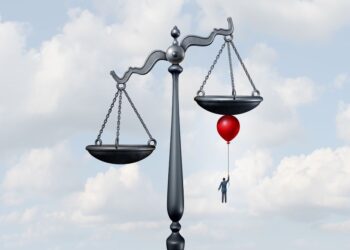We are now heading into year three of the pandemic, and many litigants and attorneys have participated in Zoom court hearings. There are a lot of upsides to Zoom hearings: they keep people socially distanced; they save time and money; and they keep more cars off the roads, which is better for the environment. From my understanding, they also result in fewer nonappearances by parties.
As a court reporter with many years of experience using both stenographic and digital audio recording methods of capturing the record, I believe there is a circumstance when using Zoom is not at all appropriate. That circumstance is when the person overseeing the recording of the proceeding is simultaneously overseeing the recording of multiple other hearings when one or more of the hearings is using the Zoom platform.
I am not wholesale against using digital audio (in the Minneapolis-St. Paul area, that typically means using a digital audio recording platform called CourtSmart). I think CourtSmart has its place in the court system. I know there are steno reporters who disagree with me on this. Although most of my career has been spent as a stenographic court reporter, I formerly worked in a metro area judicial district where there was widespread use of CourtSmart. Some days my assignment would be to monitor CourtSmart hearings, which means I would flip from courtroom to courtroom, listening in and making notes pertinent to the proceedings. Although I was assigned to multiple courtrooms, only one courtroom could be listened to at a time. A CourtSmart monitor’s daily average assignment was four courtrooms, but it could be as many as nine at a time. Despite this, I recognized CourtSmart’s value when it was used in an appropriate manner.
I believe the court record is seriously jeopardized when administrators who decide how the record will be captured either have a particular interest in promoting one form of capturing the record over another, and/or don’t understand the intricacies of making a verbatim record. They don’t understand that, should they opt to use CourtSmart to capture the official record of a Zoom court hearing, they should require the CourtSmart monitor (sometimes called an electronic recording equipment operator or electronic court reporter) to monitor the proceeding on a one-to-one basis rather than having the monitor cover multiple courtrooms simultaneously. The record suffers because of management’s lack of understanding.
Unfortunately, I have witnessed this happen time and time again and have had the frustrating experience of attempting to prepare useable transcripts from these low-quality audio recordings. It begs the question, why aren’t unbiased people who thoroughly understand both stenographic and digital audio recording brought to the table so that informed decisions can be made on which method of capturing the record is acceptable under different circumstances?
I’ve been around the law for many years, but that doesn’t make me a judge. I know what I don’t know. I’m not an expert in the law. But I don’t believe that judges and administrators understand that even if they’ve been around “the record” for their entire careers, there’s a lot they don’t know about actually making the record. They rely on advice from people who have a lack of understanding and may have an outside agenda, whether it be saving a nickel here and there or pushing for a particular type of audio recording equipment to be utilized, for whatever reason. I strongly believe that the only agenda should be that of ensuring the accuracy and completeness of the record.
To quote Minnesota’s Chief Justice, “I have a solemn responsibility to be a good steward of our Judicial Branch, an institution promised in our constitution. The judiciary is where the people come when the things that are most important to them – their family, their freedom, their property – the things they treasure most, they come to us when those treasures are threatened. They come to us, and they come looking for justice. This is as it must be, because the judiciary is at the heart of what our founders meant when they spoke Minnesota into existence with our constitution and promised that our state ‘Government is instituted for the security, benefit and protection of the people.’”
Do the Chief Justice’s words apply to the appellate process, when a complete and accurate transcript is crucial, when the Court of Appeals is making important decisions regarding Minnesota citizens’ families, freedom, and property based on the official court transcript? Or does close only count in horseshoes and hand grenades, and now also appellate court transcripts?
Let’s say you’re an attorney attending a Zoom/CourtSmart hearing, and let’s do the math. I’m the CourtSmart monitor who is overseeing four courtrooms, including yours. Statistically, that means I’m actively “attending” your particular Zoom hearing maybe 25 percent of the time. Which means that 75 percent of the time, the recording equipment is just running with no one actually monitoring your hearing. And even if I happen to be monitoring your hearing at a time the Wi-Fi cuts out, which happens a lot in Zoom hearings (many times parties attending Zoom court hearings are sitting in their cars tapping into a sketchy public Wi-Fi connection; think coffee shop), I don’t have a way to immediately interject and ask for a repeat. All I have is a Chat feature in the CourtSmart program that enables me to send a message to the clerk, who may or may not be looking at the CourtSmart messaging system at the time I send the message; and who may or may not then interject and say, “The court reporter said the Wi-Fi cut out, so can you please repeat what you said a while ago?” Which while ago? There is no doubt that the record has already been compromised at that point.
Additionally, the particular judicial district to which I’m referring uses the term “court reporter” pretty loosely. They print business cards that say “Court Reporter” as the title of the CourtSmart monitor who is overseeing the digital audio recordings, even though many of the employees who work in this position have no formal education as a court reporter, other than a two-week crash course when they begin employment as a CourtSmart monitor.
Let’s take a look at the definition of “court reporter.” Please note the recurring theme of the word “stenographer” and a form of the infinitive “to transcribe” included in the below definitions:
- Merriam-Webster: a stenographer who records and transcribes a verbatim report of all proceedings in a court of law
- Black’s Law Dictionary: the term that is given to the official stenographer who is employed by the court to write down all that has transpired
- Dictionary.com: a stenographer employed to record and transcribe an official verbatim record of the legal proceedings of a court
- The Free Dictionary: a stenographer who makes a verbatim record and transcription of court proceedings
Most of the CourtSmart monitors don’t transcribe the audio recordings and never have, with the exception of one small transcript they must produce to pass the state’s electronic reporter certification. So they aren’t in the habit of monitoring a hearing with the end product, the whole purpose of the official record, which is the transcript, in mind, the way thoroughly trained court reporters are taught to do. They have never had to deal with a subpar audio recording generated through the Zoom/CourtSmart platform. They don’t suffer any consequences when there’s a bad recording. The people transcribing these audios, usually steno reporters, are walking behind the horses in the Zoom/CourtSmart parade, carrying shovels and cleaning things up as best they can.
Some of the substandard audio is beyond the CourtSmart monitor’s personal control. They might be monitoring one hearing when the Wi-Fi in one of their other assigned (but currently not being monitored) Zoom hearings decides to act up. Or it might be that the audio is distorted because all Zoom hearings are run through a control panel (called a Crestron) that is located in a courtroom randomly assigned to that Zoom hearing, which is then piped into the CourtSmart recording platform, and that process in and of itself can cause audio distortions. Or it may be that people in the Zoom hearing are not following the rules of decorum and are talking over each other, coupled with the fact that there isn’t a separate audio track being recorded for each speaker, resulting in a portion of the audio recording that is indecipherable gobbledygook.
Maybe judges think they’re doing a good job of asking people to repeat when necessary; from experience, I can tell you they’re usually not. They’re listening to the testimony in a way that’s different from how the person capturing the record is listening to it. They’re listening to the forest; properly trained court reporters are listening to the trees. Maybe the judges think the CourtSmart monitor is going to send a Chat when they need something repeated; they’re not, because the monitor is probably not even listening to that hearing at that moment in time.
There is just no way around it: Not having a person monitoring the audio recording on a one-to-one basis during a Zoom/CourtSmart hearing significantly increases the chances of an unreliable record.
I understand that there aren’t enough steno reporters to cover the thousands of Zoom court hearings currently taking place in our state. I also believe the Minnesota Judicial Branch’s upper management has helped to create this shortage by promoting electronic recording over steno reporting and thinking it’s some sort of technological panacea. Their attitude reminds me of a picture that was in one of my computer science textbooks from back in my college days. That picture was of a person with a sort of dreamy, naïve smile on his face, thinking about how technology was going to solve all of his problems. It’s so easy to oversimplify something when you don’t understand how it really works.
I believe that Minnesota Judicial Branch upper management’s attitude of promoting audio recording over stenographic reporting has played a significant role in a shortage of steno reporters, for a couple of reasons:
- Court reporting is a word-of-mouth profession. I have seen multiple members of the same family engaged in the profession of court reporting because one of them became a stenographic court reporter, thought it was a worthy pursuit, and recommended it to other family members. It is akin to multiple members within the same family becoming attorneys. The steno reporters in Minnesota don’t feel supported by the Minnesota Judicial Branch’s upper management, so it’s now a rarity when a stenographic court reporter recommends the profession to their friends and family members.
- The Minnesota Judicial Branch’s upper management cried wolf years ago, saying that there was a shortage of steno reporters at a time when there actually wasn’t. Now the wolf is at the door; now there is a shortage, which happened in large part because of the way steno reporters’ worth has been devalued.
Back to the topic at hand. Within the last month of transferring out of my former district, I prepared one transcript that had 36 unintelligible or inaudible parentheticals in a 36-page transcript; 18 in an 18-page transcript. And this was after agonizing over each one of the difficult sections in the audio, listening to it over and over and trying to make sense of it. But you can’t make a silk purse out of a sow’s ear, so the transcripts wound up being a patchwork of silk purse and sow’s ear parts, with a disclaimer on my certification page. I wish I could say this is not a common occurrence, but it happens all too often when the record is (partially) captured using Zoom/CourtSmart and the CourtSmart monitor is assigned to several court proceedings simultaneously.
The official court record affects people’s lives and liberty. Each word matters. A complete record matters. Administrators making decisions about how to capture the official record should care about the quality of the official record. That should be their top priority. I imagine the district is saving money by hiring people at the bottom of the pay scale who have no formal training in capturing the record beyond what is taught during their two-week crash course. But is that wise, especially when there is a $7.7 billion budget surplus?
I would like to share an experience I recently had in my current, not former, judicial district. During a court trial in a child-protection case, the judge, court staff, attorneys, and parties appeared in person. The witnesses appeared remotely via Zoom. During one particular part of a witness’s testimony, the Zoom internet connection decided to do its thing and glitch for a second while the witness was testifying about objects the respondent had used to put their child at risk of imminent harm. I asked for a repeat from the witness – because I could, because I was reporting the trial one-to-one, because I was there, fully present, for the entire trial. The word turned out to be scissors. Scissors. Yes, that’s an important word to have been captured, don’t you think?
When I worked in CourtSmart monitoring multiple courtrooms simultaneously, I felt like I was playing some type of fast-paced video game that was always just a little bit out of control, flipping from courtroom to courtroom to courtroom to courtroom – and sometimes from courtroom to courtroom to courtroom to courtroom to courtroom to courtroom to courtroom to courtroom to courtroom.
Do you remember that infamous I Love Lucy skit when Lucy got a job working in a candy factory? (www.youtube.com/watch?v=HnbNcQlzV-4) The only difference was, Lucy was working with candy. If she missed a piece of candy here and there, the stakes were not that high. The world would have a little less tooth decay.
As a CourtSmart monitor, I was working with what was supposed to be a verbatim record, with multiple Zoom hearings and sketchy internet connections making people’s words cut out. I was working with people’s lives and liberty, the right to a full and fair hearing as guaranteed by our federal and state constitutions. How can administration not understand how important this is, or understand it but just turn a blind eye to it?
In my former district, one of the steno reporters I was working with contacted the person in charge of distributing CourtSmart recordings for transcription because the audio from a Zoom/CourtSmart hearing was so sketchy; to which he responded that the audio was “sufficient.” Really? Sufficient? Is the bar really getting that low?
I don’t know what harm has been or will be done because of this method of (partially) capturing the record being employed by this particular judicial district. Will they dodge a bullet, or several bullets? Will they eventually be sued because parts of the record are missing, which they definitely are? Will hearings have to be reconducted? Will mistrials have to be declared? In some cases, we won’t know what damage has been done until years later, when a transcript is requested.
To quote the late Harvey Goldberg, Professor Emeritus of History at the University of Wisconsin, “What you tolerate is what you get, and that becomes your culture.”
Welcome to the culture of mediocrity, official court record.












Comments 4
Excellent article, Jean. What I see in Northern Minnesota are clerks jumping at the chance to be a “court reporter” being the wages are higher for court reporters than clerks. Unfortunately, the clerks are starting at higher wages than actual stenographers, because court administration is using clerk court experience to put them higher up the ladder, even though they may only have a two-day course on running the Liberty recording system.
To add to what you’ve so beautifully written:
Courtroom decorum and speaking patterns are changing in the absence of live stenographic reporters. Attorneys and judges are losing the tradition of making a clear record: they are speaking too quickly, enunciating poorly, speaking over each other, speaking quietly, and not offering citations or spellings — all things that are important for realtime writing but even more important if one is to transcribe a recording after the fact without the ability to ask for clarifications.
There are new judges and attorneys now who have never worked with a stenographer and so may have little to no knowledge or awareness of the record’s needs in that regard. And so as courts continue down this path of using audio recordings to produce transcripts, they are getting further and further away from any chance of success. The same is true for any venture capitalist holding out hope for automatic speech recognition: the quality of the input degrades as you place the transcript “out of sight, out of mind.”
When you take a stenographer out of the courtroom, you are removing two functions: one, to guide (as needed) the manner in which people are speaking; two, to preserve the record in writing. The former must occur live. Yet even in instances where courts do have a dedicated recording monitor to serve that function, they too are only “hearing the forest,” as you so eloquently put it. Even if that monitor happens to be a former stenographer, they are unlikely to “hear the trees” if they aren’t writing contemporaneously.
Wonderful article! I, too, fell victim to being in an Illinois courthouse where part of the courtrooms were run by CourtSmart and only felony and juvenile courtrooms had live court reporters. There were times when we would monitor 6 to 9 courtrooms at a time, always emailing the clerk that, hey, someone is tapping a pencil near a microphone; or, tell the judge the witness’ microphone isn’t working. A very frustrating time, indeed, knowing that if this or that hearing was ordered by an attorney, it was going to be hell to transcribe. In Wisconsin, we are now being replaced/working with DAR “reporters” – but finding that the glitches in the recordings are causing mass chaos. I am nearing the end of my career, partly because of my age, but mostly because I can’t keep up with the juggling of us going from one courtroom to another, sometimes in the same morning, because we are so short-staffed. This profession has served me well for 45 years and it breaks my heart when I see what has happened and will continue to happen if the “higher-ups” don’t do something about promoting this fabulous art called stenography.
Excellent article and excellent points, all. In the deposition world, so-called national court reporting firms now owned by hedge fund managers and/or venture capitalists, not certified licensed court reporters as they have been historically, are trying to sell digital recording as some shiny new way of making a record because of a so-called shortage of stenographic court reporters that the national firms, themselves, created by low-balling page rates and appearance fees to the point that most stenographic court reporters will not work with them. Recordings of proceedings cannot take the place of a human court stenographer with years of rigorous training. As officers of the court, just like judges and attorneys, we take our jobs very, very seriously and are there to make sure that a fair and accurate representation of the proceedings is created. We are there to see that the public gets their fair day in court and the deposition suite and that their testimony is reported accurately. Those who are advocating for digitally recorded proceedings are there to bleed as much money as they can out of the system before moving on to overtake and decimate the next industry, just like they’ve already done in the retail and newspaper industries.